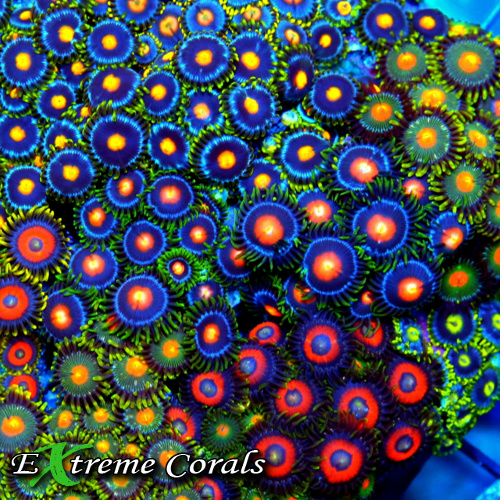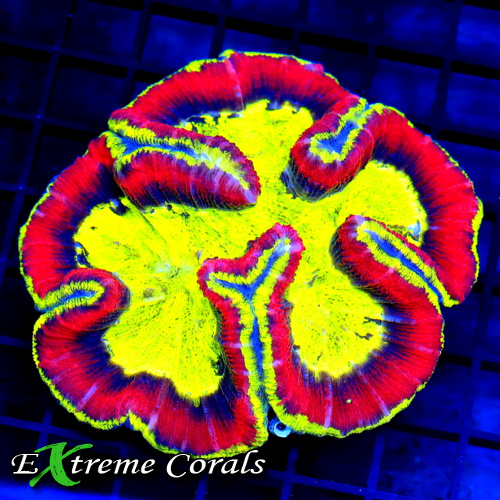Extreme Corals News and Updates
Unboxing Your First Live Corals Order: What to Expect and How to Prepare
Into the Depths: A Dive into Live Corals for Your Saltwater Aquarium
Prepare for your first live corals order and know what to expect with our guide 'Unboxing Your First Live Corals Order'.
by scott Shiles • May 03, 2024
Introduction to live corals

Live corals are a beautiful addition to any saltwater aquarium. When introducing live corals into your tank, it is essential to acclimate them slowly to prevent shock. This includes temperature acclimation and light acclimation. Live corals need proper lighting to thrive, and different types of corals require different levels of light intensity. Additionally, ensure your tank water parameters are stable and suitable for corals to promote their health and growth.
Benefits of keeping live corals in your aquarium
Having live corals in your aquarium can greatly enhance the beauty and biodiversity of your aquatic environment. Live corals provide natural filtration, helping to maintain the water quality in your tank. They also offer a natural habitat for fish and other marine creatures, promoting a healthier ecosystem. Additionally, live corals add striking colors and unique shapes to your aquarium, creating a visually stunning display that can be both relaxing and educational to observe.
Types of live corals
Live corals come in various types, such as Soft corals, LPS corals, and SPS corals.
- Soft corals have a flexible, fleshy appearance and are easy to care for.
- LPS corals have hard skeletons with large polyps and vibrant colors.
- SPS corals have small polyps and intricate, branching skeletons. Each type requires specific care and conditions to thrive in your aquarium.
Choosing the right live corals for your aquarium
Live corals bring vibrant colors and diversity to your aquarium. When selecting the right live corals, consider factors like the size of your tank, the lighting it receives, and the care level you can provide. Here are a few key points to keep in mind when choosing live corals for your aquarium:
Soft corals are generally easier to care for compared to hard corals.
LPS (Large Polyp Stony) corals are a good choice for beginners due to their hardiness.
SPS (Small Polyp Stony) corals are more challenging to maintain and require pristine water conditions.
Choose corals that thrive in conditions similar to your tank setup to ensure their health and longevity.
Research each coral species' specific requirements to create a suitable environment for them to flourish.
Ordering live corals online: Things to consider
When ordering live corals online, there are a few important things to consider. Here are some key points to keep in mind:
Choose a reputable seller such as Extremecorals.com to ensure the quality and health of the corals.
Check the shipping policies and guarantee of arrival in good condition.
Make sure you are aware of the specific care requirements of the corals you are ordering.
Have the necessary equipment ready, such as a quarantine tank and proper lighting.
Be prepared for some adjustment time as the corals acclimate to their new environment.
Unboxing your first live corals order
When your first live corals order arrives, it's crucial to handle them with care. Here's what you can expect when unboxing your live corals: Keep the box upright to prevent the water from spilling. Inspect the corals for any damage or signs of stress. Acclimate the corals to your tank's water slowly to help them adjust. It's common for corals to look slightly different from online images due to factors like lighting and water conditions. Follow the vendor's specific instructions for the best results.
Acclimating live corals to your aquarium
First things first, when you receive your live corals order, it's crucial to acclimate them properly to your aquarium. This process helps the corals adjust to their new environment, reducing stress and increasing their chances of thriving. Here's a simple guide to acclimating your live corals:
Float the sealed bag: Place the sealed bag containing the corals in your aquarium for about 15-20 minutes. This allows the water in the bag to gradually adjust to the aquarium temperature.
Drip acclimation: Gently add small amounts of aquarium water to the bag over the course of 30-45 minutes. This helps the corals acclimate to the water chemistry in your tank.
Placement: Once acclimated, carefully place the corals into your aquarium. Ensure they have adequate space and proper lighting based on their species' requirements.
By following these steps, you can help ensure a smooth transition for your new live corals into their new aquatic home.
Caring for live corals: Water quality and lighting requirements
When caring for live corals, maintaining good water quality and proper lighting is crucial. Here are some key points to consider:
Water Quality: Keep a close eye on parameters like temperature, salinity, nitrate, and phosphate levels. These factors can greatly impact the health of your corals.
Lighting Requirements: Corals need the right amount and type of light to thrive. Ensure your tank has appropriate intensity and spectrum to support coral growth.
Research: Different coral species have specific requirements, so make sure to research the needs of the corals you have.
Testing: Regularly test your water parameters using a reliable testing kit to ensure they are within the optimal range for coral health.
Adjustments: Be prepared to make adjustments to your tank setup based on the needs of your corals. Consistent monitoring and adjustment are key to their well-being.
Common challenges when dealing with live corals
Dealing with live corals can sometimes pose challenges. One common issue is acclimating the corals to the new water conditions in your tank. Rapid changes in water parameters can stress the corals, so it's important to acclimate them slowly. Another challenge is ensuring that the corals receive adequate lighting and water flow in your tank. Proper placement and maintenance of these conditions are crucial for the corals' health and growth. Lastly, keeping an eye out for pests or diseases that can affect the corals is essential. Regular monitoring and prompt action can help prevent any potential problems.
To ensure a successful live coral experience, remember to acclimate your new corals slowly to your tank environment. Gradually introduce them to the lighting and water conditions in your aquarium. Maintain stable water parameters to keep your corals healthy and thriving. Regularly monitor your tank for any signs of stress or disease in the corals. Research the specific care requirements for each type of coral you have received to provide them with the best conditions. Finally, enjoy the beauty and diversity that live corals bring to your saltwater aquarium!

